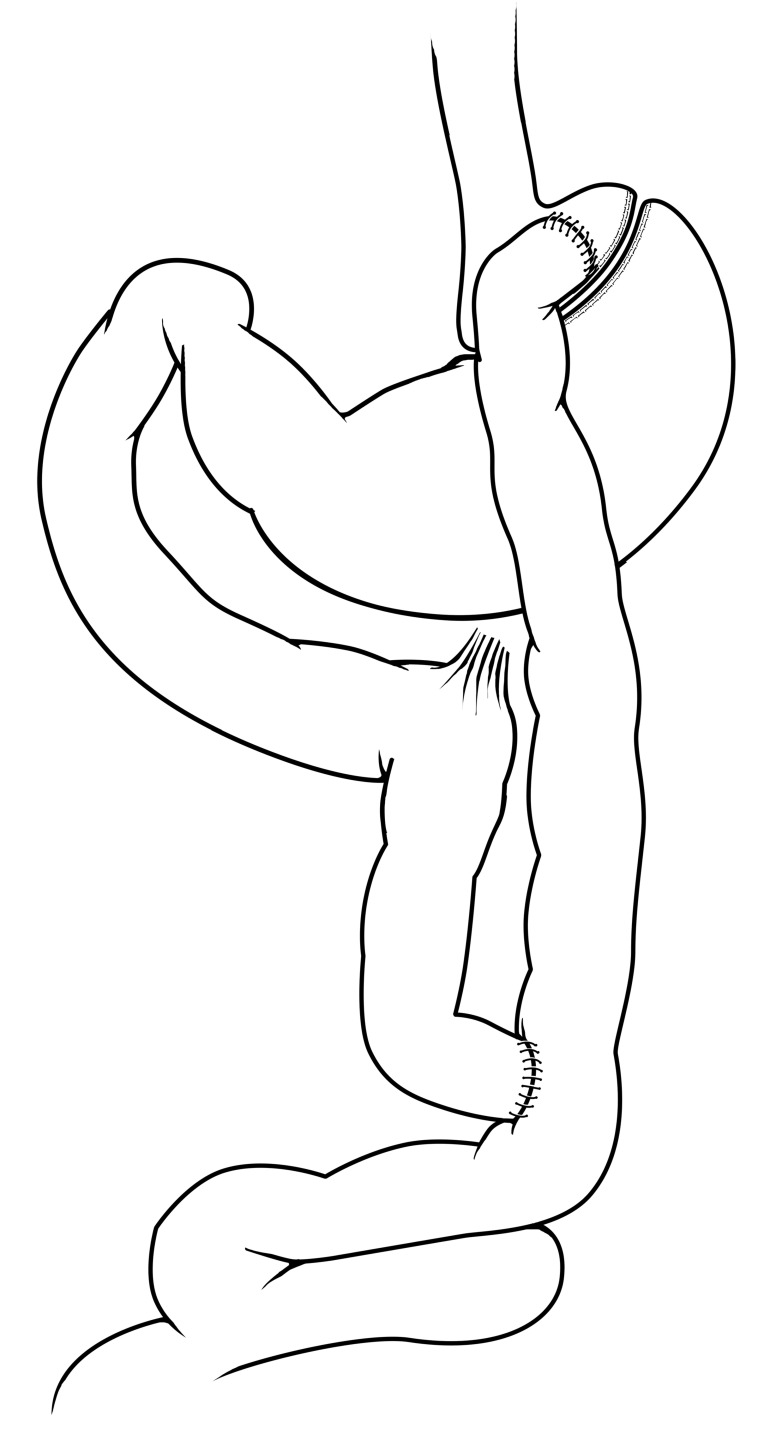Figure 2. Roux-en-Y gastric bypass.
The stomach is divided, creating a small gastric pouch (about 30 mL) that is connected via a gastrojejunostomy to a distal segment of jejunum, which forms the Roux limb of the procedure. The remainder of the stomach is referred to as the “gastric remnant” and drains into the bypassed portion of bowel, referred to as the “biliopancreatic limb”. Bowel continuity is restored for the biliopancreatic limb by a jejunojejunostomy, creating the “Y” configuration of the operation. Thus, ingested nutrients proceed rapidly through the stomach pouch and move immediately into the jejunal Roux limb in the absence of bile and pancreatic secretions. Bile and pancreatic secretions drain via the biliopancreatic limb and then mix with the chyme/nutrients at the point of the jejunojejunostomy. Reprinted with permission 35.

